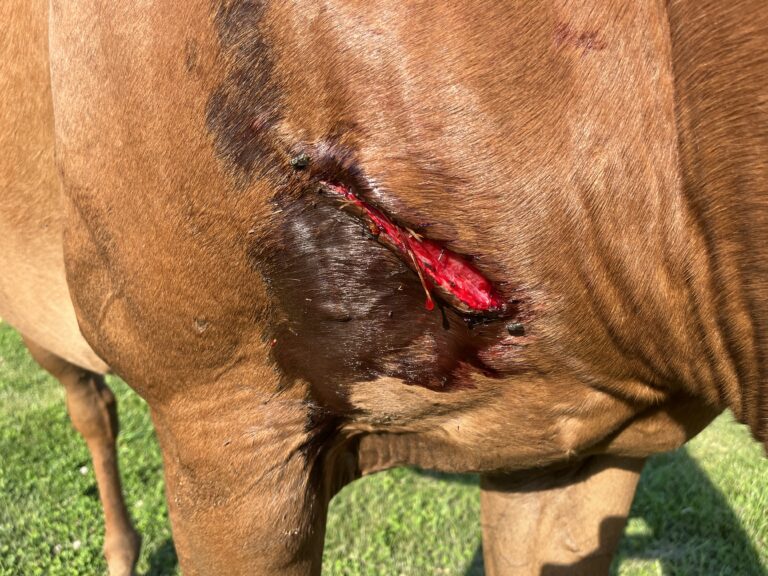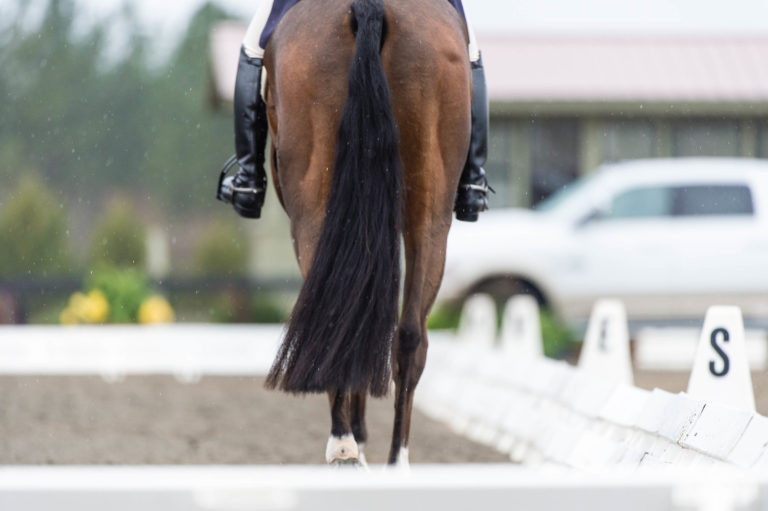Q: I live in the Northeast, where we can have some very cold weather. I ride through the winter and wonder if it’s worth clipping my horse so he doesn’t take so long to dry off after I’m done riding. But I worry that he’ll be cold when he’s turned out. Is it worth clipping him?

A: The coat of a horse serves several valuable functions. In summer, the short, fine hairs protect from sunburn and abrasions and provide some protection from biting bugs. The short, fine hair coat also allows effective evaporation of sweat, aiding in thermoregulation in hot weather. Under natural conditions, horses start to shed their summer coats and grow out the longer, coarser winter coats as the days start getting shorter in mid- to late fall. This is controlled in large measure by the photoperiod, not temperature. Blanketing your horse starting in the fall will not necessarily reduce his natural hair growth. Keeping the photoperiod longer (lights on in the barn for 12 hours throughout the late fall/winter season) may also reduce the hair growth and will enhance shedding in the spring. Exceptions to this are aged horses (usually 20 years and older) with untreated pituitary dysfunction (equine Cushings) who fail to shed their winter coats in summer and do need to be body-clipped to be comfortable in the hot months.
The longer winter coats trap the warmer air close to the skin, keeping the horse warm in the cold weather, reducing his energy needs. Each hair follicle has a tiny muscle associated with it that allows the horse to fluff up his coat in cold weather, increasing the insulation qualities. It allows horses adapted to cold weather to comfortably endure temperatures well below freezing, even if the wind is blowing, as long as they are dry. Horses with their natural hair coats can easily tolerate temperatures well below freezing as long as they have some sort of shelter from wind and precipitation. Even in snow storms horses with natural winter hair coats prefer to be outside. It has been documented that blanketing unclipped horses in cold weather may actually reduce their ability to thermoregulate if the blanket is taken off before exercise because the hair coat is flattened, reducing the insulation factor.
Why clip: If the horse is being exercised (or transported to a warmer climate in winter for competitions), the longer winter hairs will make evaporative cooling more difficult and will also drastically prolong cool-out and drying times. This makes clipping the body hairs a convenience and even necessary for horses who are training and showing in the winter season or who have persistently long hair coats in the summer due to pituitary dysfunction.
When to clip: If you will be riding/showing on a regular basis throughout the late fall/winter and your horse has access to shelter, body-clipping is probably necessary. Clipping can be either complete (clipping hair to 1/8 to 1/4 inch from the entire body except mane and tail) or partial (i.e., trace clips, which shave the hair over the jugular veins, lower shoulder, lower abdomen and lower thighs). Depending on your training schedule, this should be done as soon as the summer shed is complete and the winter coat starts to come in (usually in late fall). If the horse is in an environment where the lights are on for at least 12 hours a day, it may not be necessary to clip more than once in the winter season. I do not recommend body-clipping after May since you will be removing the summer coat.
Concerns about a clipped horse: Clipped horses are much more sensitive to cold weather than horses who have their natural coats. Blanketing will be necessary if they are turned out in cold, wet, windy weather. They may need an increase in their hay intake (fermentation in the hindgut generates heat from the inside out) due to increased energy needs. Increasing grain-based supplements in winter will not have the same benefits.
I really do not see the need to blanket in a barn unless it is extremely cold or the horse is thin-skinned, assuming there are other horses in the barn to provide body heat and it is not drafty. If they are not shivering, they probably do not need a blanket. The lack of air exposure and pressure of the blanket, which, as mentioned, flattens the hairs, are more detrimental than a little bit of a chill in moderately cold weather.
If a horse is blanketed, he is much more prone to bacterial/fungal skin infections and rub abrasions, especially if the blanket is not kept clean or is ill-fitting. You should never put an occlusive blanket on a dirty or wet horse. Sweat sheets are fine to prevent chills short term after exercise, but for overnight/all-day turnout make sure the horse is clean and dry before putting on the nice warm blanket. Another concern is with taking the blanket off to ride the horse in very cold weather. If the horse has a complete body clip, rump rugs at the very least should be used in the warm-up period.
Overuse of blankets can also be problematic. Even if a horse has a full-body clip, if the ambient temperature is above 40 to 50 degrees Fahrenheit, a blanketed horse can easily become overheated. If you are leaving a blanket on your horse full time when not riding, check frequently under the blanket to make sure the horse is not sweating. If he is, the moisture makes a perfect environment for bacterial/fungal growth and the horse is uncomfortably warm with no respite. If it is over 60 degrees Fahrenheit and sunny in the spring, don’t make your clipped horse suffer heat stress by blanketing.
Cosmetic Clipping of Facial and Fetlock Hairs
The muzzle whiskers and eyelashes are sensory organs. They let the horse know if something is close to the area around his eye or muzzle, which he cannot see. Ear hairs protect from bugs in the summer months. The feathers on the fetlocks similarly protect from bugs, though if in unsanitary conditions (deep mud, manure), they can make skin infections (i.e., scratches) more likely. It is customary to clip these whiskers/hairs for show purposes. However, increasing awareness of the importance of these hairs to a horse’s well-being has led to some countries banning the “extirpation of facial hairs,” regardless of the equestrian discipline. There are no welfare benefits to removing these facial hairs. Clipping the fetlock feathers has no welfare detriment I am aware of and may be indicated if the horses are in paddocks with deep mud/organic material (hay/feces) accumulation.
The bottom line is if your horse is body-clipped in winter, you need to worry about blanket fit, cleanliness, feed intake and overheating if blanketed in warmer weather.
Sarah Ralston, VMD, PhD, DACVN,
is Professor Emeritus and Fulbright Scholar from the Department of Animal Science at Rutgers, the State University of New Jersey. As a teenager, she rode dressage to Grand Prix Level with Col. Roberto Mondino, who was trained at Samur, France. Today she scribes at competitions and competes
at Training Level.











